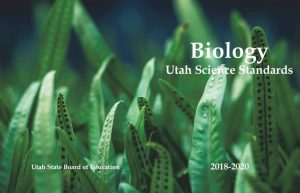 This high school Biology textbook is an Open Educational Resource (OER) textbook written specifically for students to have a reputable source for them to obtain materials and information aligned to the Utah school biology curriculum. The hope is that teachers use these resources for their students, as they keep records and suggestions on how to improve this amazing biology open textbook. The book is revised every year, based on teachers feedback and new objectives on improving the book.
This high school Biology textbook is an Open Educational Resource (OER) textbook written specifically for students to have a reputable source for them to obtain materials and information aligned to the Utah school biology curriculum. The hope is that teachers use these resources for their students, as they keep records and suggestions on how to improve this amazing biology open textbook. The book is revised every year, based on teachers feedback and new objectives on improving the book.
Utah’s first OER project was science. USBE has been working with science for over several years. UEN recognizes the support of the Hewlett Foundation, the CK12 Foundation, and Brigham Young University in development of these materials. Visit the Science Activities webpage to view all of the Online Interactive Activities that are included in each textbook.
This textbook is licensed CC-BY-NC, providing open educational content for high school biology.
The majority of content was created from CK-12 flexbooks project, http://www.ck12.org/saythanks – Thanks!
See more content from Utah Education Network in our UEN Publisher category.
Biology High School Textbook – Table of Contents
CHAPTER 1 ……………………………………………………………………………………………………13
1.1 Flow of Energy……………………………………………………………………………………………..16
Food Chains and Food Webs: Who’s eating whom? …………………………………………………..19
Energy Pyramids: Why do we have more warthogs than cheetahs?……………………………….22
Energy: Is it worth it? ………………………………………………………………………………………..24
Humans and Food: Where does my food come from? ……………………………………………….27
1.2 Matter Cycles and Organisms………………………………………………………………………….28
The Carbon Cycle: What do I and Campfire Smoke have in Common?…………………………..32
The Nitrogen Cycle: Why do we use fertilizers? ……………………………………………………….35
The Oxygen Cycle: How do I cycle oxygen?…………………………………………………………….38
Limiting Factors and Population Growth: How many mice can I fit in my pocket? …………….40
1.3 Ecosystems ………………………………………………………………………………………………..42
How do interactions among organisms and their environment help shape
ecosystems? ……………………………………………………………………………………………………42
Predator-Prey: Who’s in charge here?…………………………………………………………………….45
Competition: Does there have to be a winner? ………………………………………………………..48
CHAPTER 2 ……………………………………………………………………………………………………50
2.1 Components of Matter ………………………………………………………………………………….53
What are you made of?………………………………………………………………………………………53
Macromolecules: Are You What You Eat?………………………………………………………………..55
Water: Why do we really need it?………………………………………………………………………….60
Properties of Water: What makes it so special? ………………………………………………………..61
Enzymes and Chemical Reactions…………………………………………………………………………..63
2.2 How Do Organisms Obtain Energy ……………………………………………………………………67
Autotroph vs. Heterotroph: How Organisms Obtain Energy…………………………………………..68
Photosynthesis: How do plants make food? ……………………………………………………………..70
Oxygen: An Essential Byproduct ……………………………………………………………………………72
Cellular Respiration: How do your cells get energy?……………………………………………………74
2.3 Introduction to Cells ……………………………………………………………………………………..76
How were cells discovered?…………………………………………………………………………………..76
Cell Structure: What are Cells Made of?……………………………………………………………………79
11
The Cell Cycle: How Do You Grow?…………………………………………………………………………84
Transport: How do materials get into and out of a cell? ………………………………………………88
CHAPTER 3 ……………………………………………………………………………………………………..94
3.1 Organization of Living Things……………………………………………………………………………96
Levels of Organization …………………………………………………………………………………………96
The Skeletal System…………………………………………………………………………………………….99
Muscular System ………………………………………………………………………………………………..101
Integumentary System: What is the largest organ in your body? ……………………………………103
Nervous System: How does it work so fast?……………………………………………………………….107
Circulatory System: How do materials move around my body?……………………………………….109
Respiratory System: How does the rest of my body get oxygen?…………………………………….113
Digestive System: How does my body get rid of waste?………………………………………………..115
Excretory System…………………………………………………………………………………………………117
Lymphatic System ……………………………………………………………………………………………….118
Reproductive Systems:………………………………………………………………………………………….119
3.2 Comparing Organ Systems ……………………………………………………………………………….120
3.3 Plant Tissue and Growth ………………………………………………………………………………….124
Plant organs: What are Roots, Stems, Leaves, and Flowers?…………………………………………..126
CHAPTER 4 ………………………………………………………………………………………………………135
4.1 Reproduction …………………………………………………………………………………………………138
Reproduction: One Parent or Two? ………………………………………………………………………….138
Do you have ALL your parents’ genetic material?…………………………………………………………141
4.2 Inheritance Patterns ……………………………………………………………………………………….146
How did Mendel experiment with peas?…………………………………………………………………….146
Ethical, Legal and Social Issues: Right or Wrong? ……………………………………………………….157
4.3 Mendelian Genetics ………………………………………………………………………………………..159
Mendelian Genetics ……………………………………………………………………………………………..159
4.4 DNA…………………………………………………………………………………………………………….166
Is my DNA the Same as My Mother’s?………………………………………………………………………166
RNA: How is it related to DNA?……………………………………………………………………………….173
Mutations: Can my DNA change? ……………………………………………………………………………177
CHAPTER 5 ……………………………………………………………………………………………………….183
12
5.1 Evidence of Evolution ……………………………………………………………………………………..186
When did life on Earth appear?……………………………………………………………………………….186
Fossils: What can fossils tell us about the past……………………………………………………………188
Natural Selection: How Did Darwin Discover Natural Selection? ……………………………………..191
Evidence: How is Evolution Supported by Evidence?…………………………………………………….199
5.2 How Does Evolution Happen …………………………………………………………………………….206
Speciation: What Causes Speciation?………………………………………………………………………..211
5.3 Classification of Living Things ……………………………………………………………………………215
How do we classify living things? …………………………………………………………………………….215
Mass Extinction: How has classification changed?………………………………………………………..226
Sample Biology – Open Educational Resource
1.1 Flow of Energy How Does Energy Flow Through an Ecosystem?
Am I all alone? Do organisms live in isolation? No, organisms are not separated from their environment or from other organisms. They interact in many ways with their surroundings.
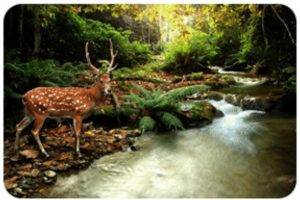 For example, this deer may be drinking from this stream or eating nearby plants. Ecology is the study of living (biotic) and nonliving (abiotic) interactions in an environment. All organisms have the ability to grow and reproduce. To grow and reproduce, organisms must get materials and energy from the environment. Plants obtain their energy from the sun through photosynthesis, whereas animals obtain their energy from other organisms. Either way, these plants and animals, as well as bacteria and fungi, are constantly interacting with other species as well as the nonliving parts of their ecosystem (the interaction of all of the living and nonliving parts of a community). An organism’s environment includes two types of factors:
For example, this deer may be drinking from this stream or eating nearby plants. Ecology is the study of living (biotic) and nonliving (abiotic) interactions in an environment. All organisms have the ability to grow and reproduce. To grow and reproduce, organisms must get materials and energy from the environment. Plants obtain their energy from the sun through photosynthesis, whereas animals obtain their energy from other organisms. Either way, these plants and animals, as well as bacteria and fungi, are constantly interacting with other species as well as the nonliving parts of their ecosystem (the interaction of all of the living and nonliving parts of a community). An organism’s environment includes two types of factors:
• Abiotic factors are the parts of the environment that are not living, such as sunlight, climate, soil, water, and air.
• Biotic factors are the parts of the environment that are alive, or were alive and then died, such as plants, animals, and their remains. Biotic factors also include bacteria, fungi and protists. Ecology studies the interactions between biotic factors, such as organisms like plants and animals, and abiotic factors. For example, all animals (biotic factors) breathe in oxygen (abiotic factor). All plants (biotic factor) absorb carbon dioxide (abiotic factor) and need water (abiotic factor) to survive.
• Ecosystems can be studied at small levels or at large levels. The levels of organization are described below from the smallest to the largest: 17
• Individuals are members of the same species (a group of individuals who are genetically related and can breed to produce fertile offspring), if their members cannot produce offspring that can also have children. The second word in the two-word specific name given to every organism is the species name. For example, in Homo sapiens, sapiens is the species name and Homo is the genus.
• A population is a group of organisms belonging to the same species that live in the same area and interact with one another.
• A community is all of the populations of different species that live in the same area and interact with one another.
• An ecosystem includes the living (biotic) organisms (all the populations) in an area and the non-living (abiotic) aspects of the environment and their interactions.
• The biosphere in the figure below, is the highest level of ecological organization. It is the part of the earth, including the air, land, surface rocks, and water, where life is found and includes almost all of the Earth. Parts of the lithosphere, hydrosphere, and atmosphere make up the biosphere.
<end of sample>
See more Books under Science Category Below
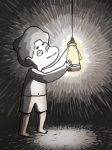 Unni’s Wish - Unni doesn’t understand why he can’t have cold lime juice, a fan to keep cool, or TV like his friend, then one day some men come to work in his village, what do you think will happen? A beautiful Creative Commons book from Pratham Books. Attribution: Unnit’s Wish (English), written by Meryl Garcia, illustrated by ...
Unni’s Wish - Unni doesn’t understand why he can’t have cold lime juice, a fan to keep cool, or TV like his friend, then one day some men come to work in his village, what do you think will happen? A beautiful Creative Commons book from Pratham Books. Attribution: Unnit’s Wish (English), written by Meryl Garcia, illustrated by ...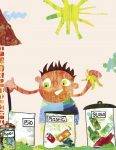 I Love My Planet – Child friendly conservation guide - I do not use plastic bags but I use cloth bags instead.
I Love My Planet – Child friendly conservation guide - I do not use plastic bags but I use cloth bags instead.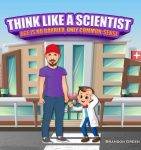 Think Like a Scientist – Age is no barrier, just common sense - Jack’s dad started to show some symptoms of a weird illness. He went to several doctors and they couldn’t find anything wrong. Jack’s Dad decided it was important to think like a scientist and did not give up looking. Finally, he found a specialist who diagnosed his condition, but not soon enough – Jack’s grandparents ...
Think Like a Scientist – Age is no barrier, just common sense - Jack’s dad started to show some symptoms of a weird illness. He went to several doctors and they couldn’t find anything wrong. Jack’s Dad decided it was important to think like a scientist and did not give up looking. Finally, he found a specialist who diagnosed his condition, but not soon enough – Jack’s grandparents ...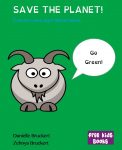 Save the Planet – Be Nice series book 4, revised edition - Save the Planet is a short simple book for young children, and beginner ESL readers, promoting values of conservation and ecologically-friendly behaviour. This book teaches children ten important lessons about conservation and actions that can help preserve and conserve our natural environment and the resources, for those of us, people and animals, who inhabit it. ...
Save the Planet – Be Nice series book 4, revised edition - Save the Planet is a short simple book for young children, and beginner ESL readers, promoting values of conservation and ecologically-friendly behaviour. This book teaches children ten important lessons about conservation and actions that can help preserve and conserve our natural environment and the resources, for those of us, people and animals, who inhabit it. ... With Love Gaia - A beautiful leaf flutters from the palm of Gaia, Mother Earth, with a message for Kaya and Kabir. What is the message? What does Mother Earth want to say to us? Is she hurting? How can we help? Read on to find out about Kaya and Kabir’s adventure and how the children organise their community ...
With Love Gaia - A beautiful leaf flutters from the palm of Gaia, Mother Earth, with a message for Kaya and Kabir. What is the message? What does Mother Earth want to say to us? Is she hurting? How can we help? Read on to find out about Kaya and Kabir’s adventure and how the children organise their community ... Forward to the Moon – NASA Activities Book - Published by NASA this space activities book provides fun recognition, word, and math activities and information about space flight aimed at children aged 5 to 12. Spread the love
Forward to the Moon – NASA Activities Book - Published by NASA this space activities book provides fun recognition, word, and math activities and information about space flight aimed at children aged 5 to 12. Spread the love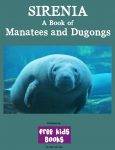 Sirenia – A Book of Manatees and Dugongs - Manatees and Dugongs, commonly named Sea Cows due to their vegetarian nature, are beautiful, gentle creatures, inhabiting shallow areas such as mangroves and estuaries in the warm equatorial regions. Learn more about these magnificent creatures in this book, aimed at early to mid elementary (primary) school children. The book is released in creative commons and ...
Sirenia – A Book of Manatees and Dugongs - Manatees and Dugongs, commonly named Sea Cows due to their vegetarian nature, are beautiful, gentle creatures, inhabiting shallow areas such as mangroves and estuaries in the warm equatorial regions. Learn more about these magnificent creatures in this book, aimed at early to mid elementary (primary) school children. The book is released in creative commons and ...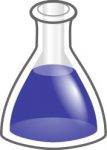 WikiJunior Big Book of Fun Science Experiments for Young Children – Book 1 - Herewith the Wikijunior big book of Science Experiments featuring the first five featured experiments from Wikijunior. Contents Slime recipes Yucky gooey slime! Isn’t it just great?! We love it! Oobleck – is it a liquid or a solid? Red cabbage indicator Red cabbage indicators are great for showing if something is an acid or base. ...
WikiJunior Big Book of Fun Science Experiments for Young Children – Book 1 - Herewith the Wikijunior big book of Science Experiments featuring the first five featured experiments from Wikijunior. Contents Slime recipes Yucky gooey slime! Isn’t it just great?! We love it! Oobleck – is it a liquid or a solid? Red cabbage indicator Red cabbage indicators are great for showing if something is an acid or base. ...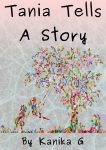 Tania Tells a Story - Tania writes a fantasy story inspired by a science article. Sonia’s journey on an emotional roller-coaster as Tania skillfully weaves the plot through curiosity, fear, relief, hope, excitement, anger and so much more, leaves her with a lot to think about. Tania’s dramatic narration, and the little discussions between the sisters add to the charm ...
Tania Tells a Story - Tania writes a fantasy story inspired by a science article. Sonia’s journey on an emotional roller-coaster as Tania skillfully weaves the plot through curiosity, fear, relief, hope, excitement, anger and so much more, leaves her with a lot to think about. Tania’s dramatic narration, and the little discussions between the sisters add to the charm ...See more Textbooks Below
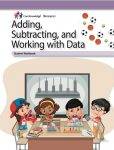 Adding, Subtracting, and Working with Data – Grade 1 Workbook - A great workbook for teachers or homeschoolers, featuring exercises, games, and opportunities for learning. This book comes with a teacher guide and it is important to read both together. Creator: Core Knowledge Foundation Sample Page from Adding, Subtracting, and Working with Data Spread the love
Adding, Subtracting, and Working with Data – Grade 1 Workbook - A great workbook for teachers or homeschoolers, featuring exercises, games, and opportunities for learning. This book comes with a teacher guide and it is important to read both together. Creator: Core Knowledge Foundation Sample Page from Adding, Subtracting, and Working with Data Spread the love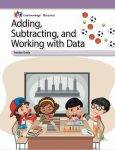 Adding, Subtracting, and Working with Data – Grade 1 Teacher Guide - The teachers guide to Adding, Subtracting, and Working with Data – Grade 1 Workbook. A great workbook for teachers or homeschoolers, featuring exercises, games, and opportunities for learning. This book supplements the student workbook and it is important to read both together. Creator: Core Knowledge Foundation Sample Page from Adding, Subtracting, and Working with Data ...
Adding, Subtracting, and Working with Data – Grade 1 Teacher Guide - The teachers guide to Adding, Subtracting, and Working with Data – Grade 1 Workbook. A great workbook for teachers or homeschoolers, featuring exercises, games, and opportunities for learning. This book supplements the student workbook and it is important to read both together. Creator: Core Knowledge Foundation Sample Page from Adding, Subtracting, and Working with Data ...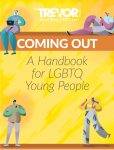 Coming Out Handbook – The Trevor Project - Sexual identity and gender identity are topics that can involve intense confusion for teens and young adults. Discovering your sexual identity and/or gender identity is the first step that one must undertake and this book helps by first explaining how gender identity and sexual identity are not just black and white – or pink and ...
Coming Out Handbook – The Trevor Project - Sexual identity and gender identity are topics that can involve intense confusion for teens and young adults. Discovering your sexual identity and/or gender identity is the first step that one must undertake and this book helps by first explaining how gender identity and sexual identity are not just black and white – or pink and ... Trigonometry 2 – Apprenticeship and Workplace Mathematics 10 - This section on Trigonometry 2 – Apprenticeship and Workplace Mathematics 10 is made up of several lessons. Lessons, Essential Questions, Focus, Get Started, Activities, Explore, Bringing Ideas Together and Lesson Summary. Open School BC is an online learning service that provides support and learning services for K-12 and for workplace learners. Their resources include a wealth of quality K-12 educational material, ...
Trigonometry 2 – Apprenticeship and Workplace Mathematics 10 - This section on Trigonometry 2 – Apprenticeship and Workplace Mathematics 10 is made up of several lessons. Lessons, Essential Questions, Focus, Get Started, Activities, Explore, Bringing Ideas Together and Lesson Summary. Open School BC is an online learning service that provides support and learning services for K-12 and for workplace learners. Their resources include a wealth of quality K-12 educational material, ...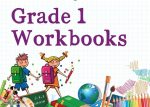 Grade 1 Workbooks - This post contains all our Grade 1 and Kindergarten (Pre-K, K) textbooks, workbooks, and worksheets. Enjoy! ****** Grade 1 English Language and Arts Workbooks All our kindergarten and grade 1 English Language and Arts (ELA, EFL, ESL, grammar, art, music) workbooks and open education resources. Grade 1 to 2 ELA Activity Books and Teachers Guides ...
Grade 1 Workbooks - This post contains all our Grade 1 and Kindergarten (Pre-K, K) textbooks, workbooks, and worksheets. Enjoy! ****** Grade 1 English Language and Arts Workbooks All our kindergarten and grade 1 English Language and Arts (ELA, EFL, ESL, grammar, art, music) workbooks and open education resources. Grade 1 to 2 ELA Activity Books and Teachers Guides ... Grade 2 Workbooks - This post contains all our grade 2 free school textbooks, workbooks, and worksheets, perfect for classroom or homeschool use. Enjoy! English Language and Arts Textbooks Grade 2 Grade 2 English including ELA, EFL, ESL, EAL, and all art related subjects. Grade 1 to 2 ELA Activity Workbooks and Teacher Guides Publisher: Open Schools BC ...
Grade 2 Workbooks - This post contains all our grade 2 free school textbooks, workbooks, and worksheets, perfect for classroom or homeschool use. Enjoy! English Language and Arts Textbooks Grade 2 Grade 2 English including ELA, EFL, ESL, EAL, and all art related subjects. Grade 1 to 2 ELA Activity Workbooks and Teacher Guides Publisher: Open Schools BC ...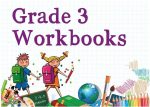 Grade 3 Workbooks - This post contains all our grade 3 free school textbooks, workbooks, and worksheets. These free school resources and OER textbooks are perfect for classroom or homeschool use. Enjoy! Grade 3 English Language and Arts Textbooks Grade 3 English language and arts (ELA), including EFL, ESL, EAL, and all art related subjects. English Banana Big ...
Grade 3 Workbooks - This post contains all our grade 3 free school textbooks, workbooks, and worksheets. These free school resources and OER textbooks are perfect for classroom or homeschool use. Enjoy! Grade 3 English Language and Arts Textbooks Grade 3 English language and arts (ELA), including EFL, ESL, EAL, and all art related subjects. English Banana Big ...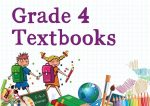 Grade 4 Textbooks - This post has all of our free school textbooks for Grade 4, perfect for classroom and homeschool use, enjoy! English Language and Arts Textbooks Grade 4 Grade 4 English including ELA, EFL, ESL, EAL, and all art related subjects. Engage NY – Grade 4 English Resources US CCSS Engage NY Grade 4 English Language ...
Grade 4 Textbooks - This post has all of our free school textbooks for Grade 4, perfect for classroom and homeschool use, enjoy! English Language and Arts Textbooks Grade 4 Grade 4 English including ELA, EFL, ESL, EAL, and all art related subjects. Engage NY – Grade 4 English Resources US CCSS Engage NY Grade 4 English Language ...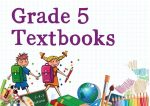 Grade 5 Textbooks - This post has all of our free school textbooks, workbooks, activity books, and tests for Grade 5, perfect for classroom or homeschool use, enjoy! English Language and Arts Textbooks Grade 5 Grade 5 English including ELA, EFL, ESL, EAL, and all art related subjects Grade 5 English Textbooks India * NCERT/CBSE Grade 5 English ...
Grade 5 Textbooks - This post has all of our free school textbooks, workbooks, activity books, and tests for Grade 5, perfect for classroom or homeschool use, enjoy! English Language and Arts Textbooks Grade 5 Grade 5 English including ELA, EFL, ESL, EAL, and all art related subjects Grade 5 English Textbooks India * NCERT/CBSE Grade 5 English ...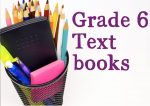 Grade 6 Textbooks - This post has all of our free school textbooks for Grade 6, perfect for classroom or homeschool use, enjoy! English Language and Arts Textbooks Grade 6 Grade 6 English including ELA, EFL, ESL, EAL, and all art related subjects Grade 6 English Textbooks India * NCERT/CBSE Grade 6 English Textbook, Honeysuckle, and supplementary reader A Pact ...
Grade 6 Textbooks - This post has all of our free school textbooks for Grade 6, perfect for classroom or homeschool use, enjoy! English Language and Arts Textbooks Grade 6 Grade 6 English including ELA, EFL, ESL, EAL, and all art related subjects Grade 6 English Textbooks India * NCERT/CBSE Grade 6 English Textbook, Honeysuckle, and supplementary reader A Pact ...Sponsored Links:
Note – if you sign up through these links, it doesn’t cost you any extra, but FKB receives a small donation, which helps us move towards our aim of
FREE Hardcopies!
All our posts are checked by Grammarly, the FREE online grammar checker (We still receive a donation even if you only sign up for the free account :-):

This site is hosted by Bluehost:

Leave a comment (it won’t be public) if you want help getting your own website cost-effectively.











